By Kiki Mazzucchelli | Images courtesy of Galerie Jahn
…In that Empire, the Art of Cartography attained such Perfection that the map of a single Province occupied the entirety of a City, and the map of the Empire, the entirety of a Province. In time, those Unconscionable Maps no longer satisfied, and the Cartographers Guilds struck a Map of the Empire whose size was that of the Empire, and which coincided point for point with it. The following Generations, who were not so fond of the Study of Cartography as their Forebears had been, saw that that vast Map was Useless, and not without some Pitilessness was it, that they delivered it up to the Inclemencies of Sun and Winters. In the Deserts of the West, still today, there are Tattered Ruins of that Map, inhabited by Animals and Beggars; in all the Land there is no other Relic of the Disciplines of Geography.
—Suarez Miranda,Viajes devarones prudentes, Libro IV,Cap. XLV, Lerida, 1658[1]
Rather than a two-person exhibition, Radio City is a dialogical collaboration between Martin Groß and Julius Heinemann in which the artists explore a converging interest in the notion of scale. While there is a noticeable difference in terms of approach, use of media and formal solution in their practices, both have been experimenting with the possibilities of pictorial space for some time, particularly in its relationship with architectural space.
Situated somewhere between the communication of signs and the solipsism of abstraction, Groß’s black and white prints serve as the basis for larger wallpaper installations. His compositions evoke the spectral presence of images, which are rendered unreadable through a process of over-layering figures and motifs that create textured, quasi-abstract surfaces. When enlarged and installed on the walls, these prints take on an environmental quality, interfering directly on the architecture of the exhibition space and the way viewers are affected by and relate to it.

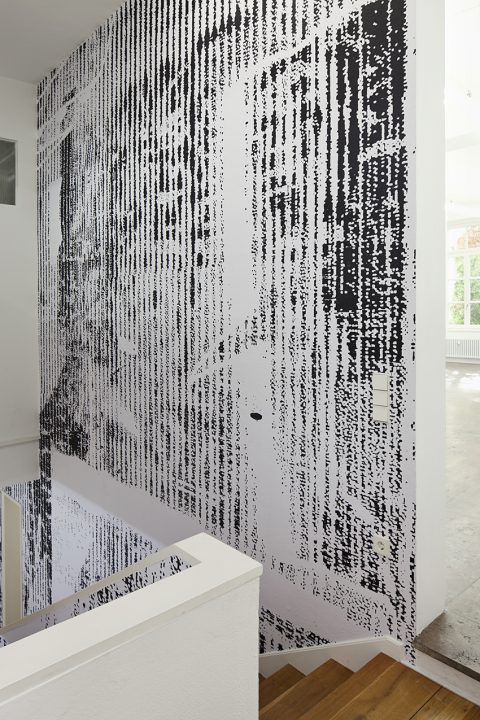
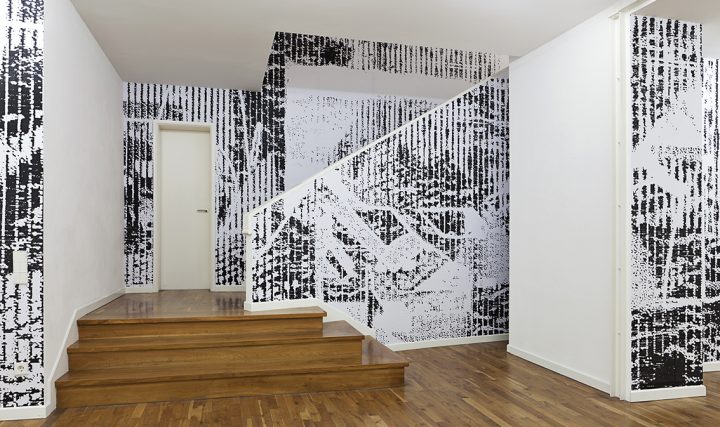
For Radio City, Groß has created a site-specific wallpaper installation that occupies several walls in one side of the gallery’s back room. Sweeping horizontal lines traverse the whole length of this end of the space from floor to ceiling, partially obscuring or revealing images reminiscent of modernist buildings that seem to lie in a latent state in the background. In the same room, Heinemann’s minute postcard paintings, in which the images of cities or monuments are almost completely veiled by white layers of paint, create a kind of zoom out effect when seen in relation to Groß’s installation. The contrasting scales of the wallpaper and postcards, and the fact that both seem to suggest similar images – sections of buildings in the first case and the ‘sea of buildings’ that forms the cityscape in the latter -, creates a kind of ‘Vertigo effect’: the famous dolly zoom immortalized by Hitchcock where the camera is pulled away from the focal object at the same time as it zooms into it.
In the gallery’s front room, Heinemann presents an installation in which notions of transparency, depth of field and over-layering are articulated through the placement of three paintings on translucent fabrics that create a temporary and changeable architecture within the exhibition space. The variable character of the installation is further emphasized by the fact that the curtains are aligned with one of the windows in the gallery – whose shape they replicate -, and thus are affected by the changes in natural lighting that constantly transform the way we see them. Painting becomes space, and as we move through it, we are able to apprehend it in multiple ways as our viewpoint is constantly changed according to our position in the room.
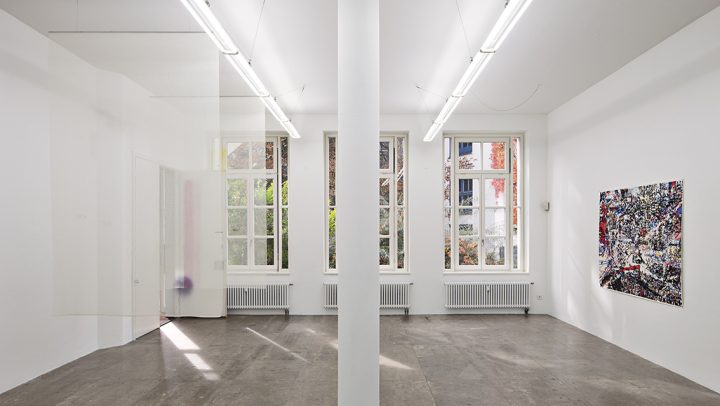
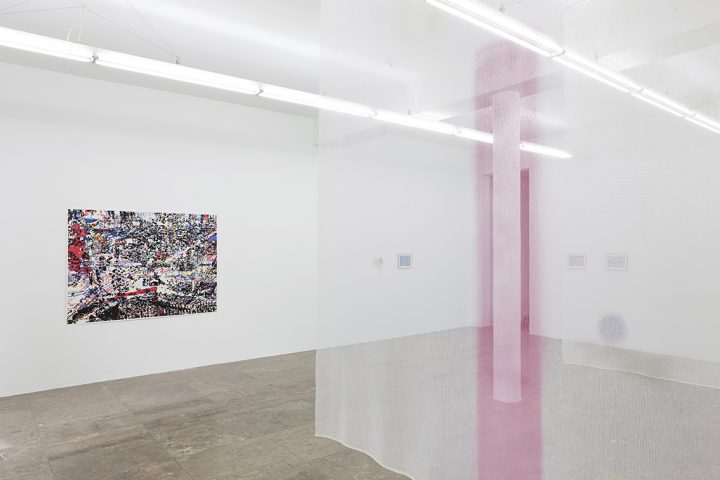
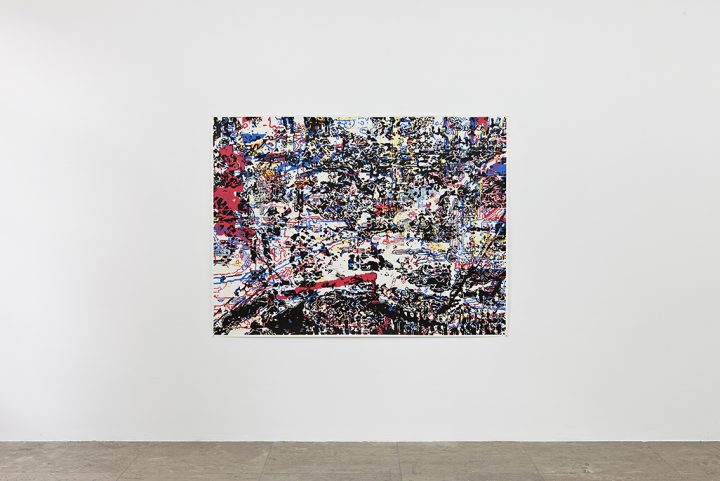
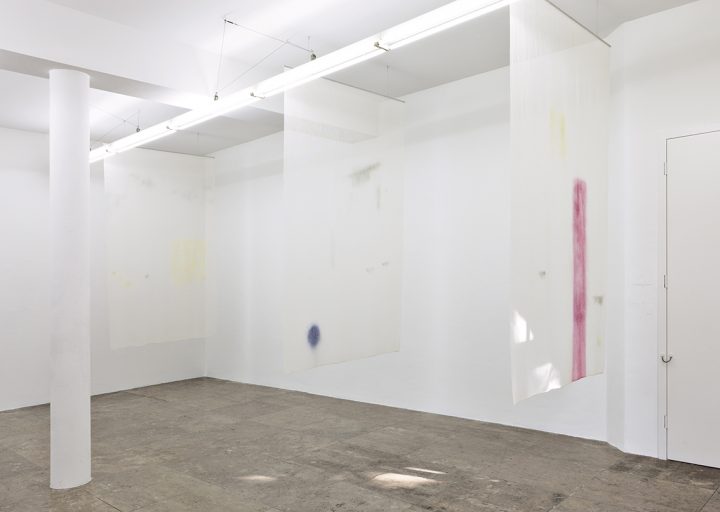
But it also becomes time, a series of fleeting moments that cannot be fully captured or apprehended. In each fabric panel, Heinemann makes delicate, sparse marks using colours, creating compositional elements that can be constantly recombined as our gaze travels through the gallery. The use of colours is reflected in a series of small industrial marker drawings by Groß presented in the same room. Packed in with juxtaposed lines and scribbles that give them weight and density, the drawings contrast not only in scale with the ethereal fabric installation, but seem to concentrate a lot of energy in a constrained space that is otherwise carefully dissipated across Heinemann’s installation. On the other hand, as much as they diverge in format or style, the works of both artists present fragmentary versions of space that complement each other as they cross back and forth from the traditional two-dimensionality of drawing and painting into actual three-dimensional space.
In Radio City, Groß and Heinemann enact a play on scale through a continuous movement of ‘pulling out’ and ‘zooming in’ that emphasizes the viewer’s awareness of the relationship between their bodies and the work, as one is constantly required to move close, away or through the pieces, while also highlighting the shifting character of perception. Ultimately, the pictorial space embraced by the artists is expanded to include the minute cities depicted in Heinemann’s postcards, the fragmented architectures of Groß’s wallpapers and drawings, finally encompassing the real city beyond the window incorporated in Heinemann’s fabric installation, coinciding, as in Borges’ story, point by point with it.
[1] On Exactitude in Science
Jorge Luis Borges, Collected Fictions, translated by Andrew Hurley (1999). The story was first published in the March 1946 edition of Los Anales de Buenos Aires, año 1, no. 3.
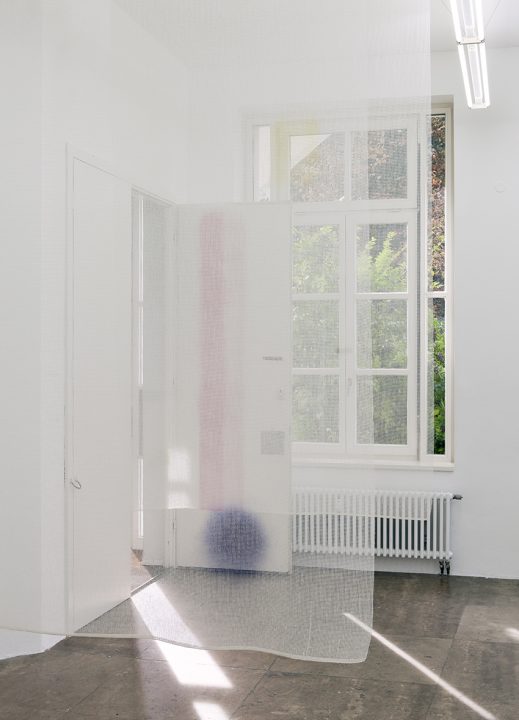
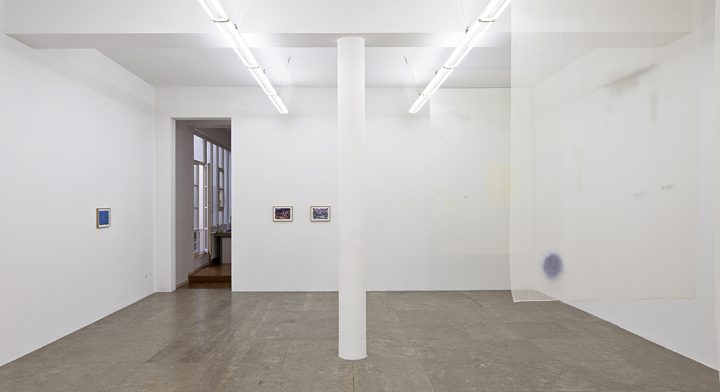
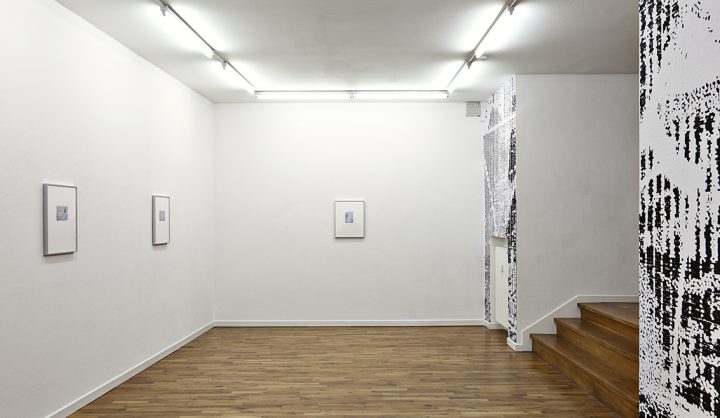

 Español
Español